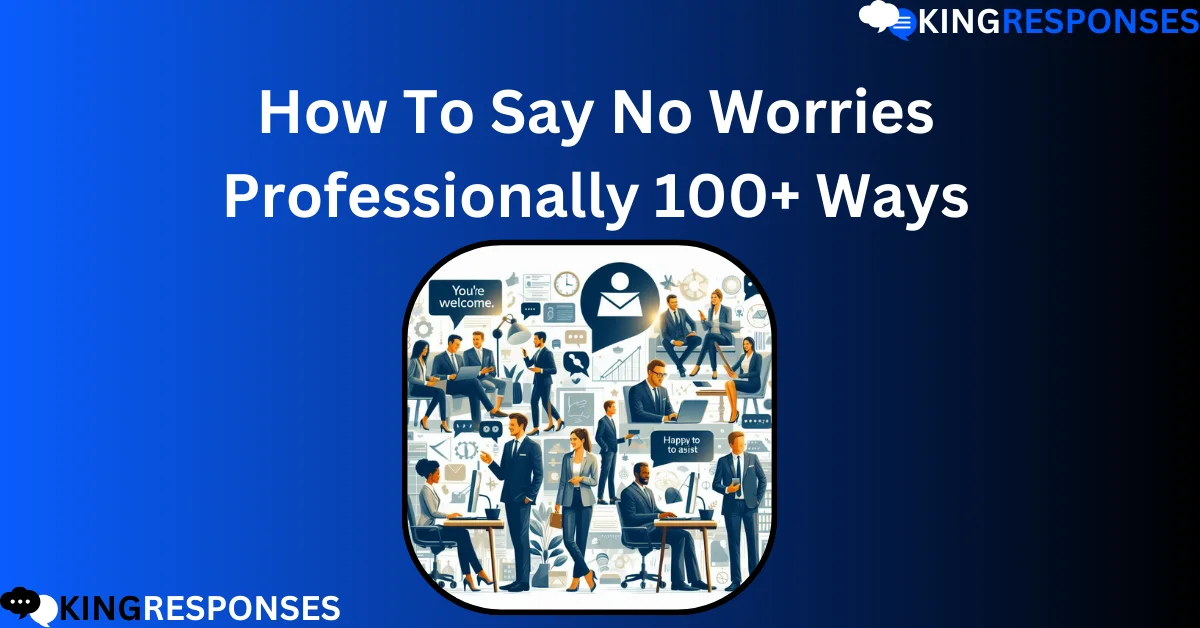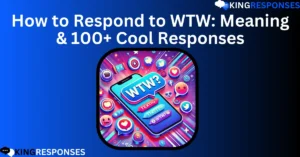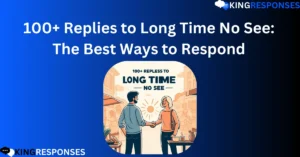In today’s professional world, communication is key to building strong relationships, whether it’s with colleagues, clients, or superiors. While the phrase “no worries” is commonly used in informal settings, it may not always be the best option in a professional context. According to communication experts, using more formal alternatives in the workplace can improve clarity, tone, and respect, ultimately enhancing business interactions.
Studies show that effective communication in the workplace can boost productivity by up to 25%. To help you navigate this, we’ve compiled 100+ ways on how to say no worries professionally, allowing you to maintain the right level of professionalism in your interactions.
Why You Should Avoid Saying “No Worries” Professionally
While “no worries” is widely accepted in casual settings, it can come across as dismissive, especially in formal business environments. In professional situations, the tone of your communication can reflect on your attitude towards your work, team, or clients. Using polished and considerate language shows that you take the interaction seriously, and it reinforces respect and professionalism.
100+ Ways on How To Say No Worries Professionally
Here are 100+ professional alternatives to “no worries,” categorized for different work scenarios:
1. Polite Alternatives to “No Worries” in Emails
- “You’re welcome.”
- “My pleasure.”
- “Glad I could help.”
- “Happy to assist.”
- “It’s no trouble at all.”
- “Absolutely, I’m here to help.”
- “Don’t hesitate to reach out again.”
- “I’m glad to assist.”
- “It’s no problem at all.”
- “Feel free to let me know if you need anything else.”
2. Professional Responses to Acknowledge a Task
- “Consider it done.”
- “I’ll take care of that.”
- “I’ll handle it promptly.”
- “Leave it with me.”
- “I’ll ensure it gets done.”
- “You can count on me for that.”
- “I’m on it.”
- “This will be handled without issue.”
3. Reassuring Phrases for Professional Situations
- “Rest assured, it’s under control.”
- “This will be managed effectively.”
- “You can rest easy knowing it’s taken care of.”
- “Everything will be handled appropriately.”
- “I’ve got it covered.”
- “No need to worry, everything is in order.”
- “It’s all under control.”
4. Professional Alternatives to Show Understanding
- “I completely understand.”
- “Thank you for letting me know.”
- “I appreciate your concern.”
- “Your point is taken.”
- “I see where you’re coming from.”
- “I understand the situation.”
- “I hear your perspective.”
5. Expressing Willingness to Help in a Professional Manner
- “Happy to help with that.”
- “Please feel free to contact me for assistance.”
- “I’m available if you need further support.”
- “Let me know if there’s anything else I can assist with.”
- “You can rely on me for help.”
- “I’m here if you need anything.”
6. Responding to Mistakes Professionally
- “Thank you for bringing this to my attention.”
- “I’ll correct that immediately.”
- “I apologize for the oversight; it will be addressed.”
- “I’ll ensure that’s resolved promptly.”
- “This will be fixed as soon as possible.”
- “I’ll handle the situation with care.”
7. Handling Requests with Professionalism
- “Certainly, I’ll look into that.”
- “I’ll prioritize this task immediately.”
- “I’m more than happy to assist with that.”
- “That’s no trouble at all.”
- “I’ll take care of this right away.”
- “I’ve added this to my list of priorities.”
8. Acknowledging Feedback with Respect
- “Thank you for your input.”
- “I appreciate the feedback.”
- “Your suggestions are valued.”
- “Thank you for sharing your thoughts.”
- “I’ll take this feedback into consideration.”
9. Diplomatic Phrases for Compromise
- “Let’s find a solution that works for both of us.”
- “We can work together to resolve this.”
- “Let’s collaborate to achieve a positive outcome.”
- “I’m sure we can reach an agreement.”
- “We’ll work towards a resolution.”
10. Customer Service-Oriented Replies
- “We’re happy to assist with your request.”
- “Thank you for reaching out to us.”
- “We’ll ensure your issue is resolved quickly.”
- “Please let us know if we can help further.”
- “We appreciate your business.”
11. Polite Replies for Apology Situations
- “I appreciate your understanding.”
- “Thank you for your patience.”
- “I’m sorry for the inconvenience.”
- “We apologize for any confusion.”
- “I regret the oversight and will correct it.”
12. Meeting and Scheduling Responses
- “I’m available at the time you requested.”
- “That time works for me.”
- “I’ll make sure to be available.”
- “Looking forward to our meeting.”
- “I’ll send a confirmation shortly.”
13. Project Management and Team Communication
- “I’ll coordinate with the team to move this forward.”
- “I’ll ensure the team is aligned.”
- “This will be incorporated into the project plan.”
- “I’ll follow up with updates.”
- “Let’s work together to meet the deadline.”
14. Handling Formal Requests from Superiors
- “Of course, I’ll make that a priority.”
- “Consider it done.”
- “I’ll get started on that right away.”
- “I’ll provide updates as requested.”
15. Friendly But Professional Phrases
- “Glad I could assist.”
- “Always happy to help.”
- “It’s my pleasure.”
- “Thanks for reaching out.”
Read More: 80+ Confident Replies to You Are So Skinny
How To Say No Worries Professionally
The phrase “no worries” may be fine in casual conversations, but it doesn’t always fit in professional situations. Learning how to say no worries professionally is essential for maintaining a respectful tone in both written and verbal communication. Below are different ways you can rephrase “no worries” to suit formal settings.
Conclusion
Professional communication is crucial in today’s workplace, and small phrases can make a big difference. By adopting polished alternatives to “no worries,” you ensure that your tone remains respectful, professional, and clear. Whether you’re communicating via email, in meetings, or with clients, having a list of professional phrases can improve your interactions and leave a lasting impression.




